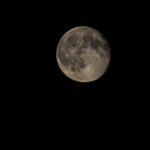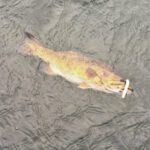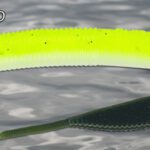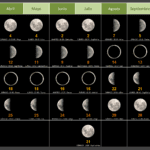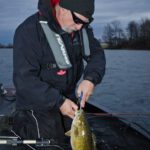The moon holds a very mystical place in the history of human culture. Since ancient times, full moons have been associated with odd or insane behaviour like sleepwalking, suicide, illegal activity, fits of violence and, of course, werewolves—all of which have since been scientifically debunked.
But when it comes to the full moon and fishing, I absolutely believe there is something to it. One of the most well-documented fishing facts is that big fish are caught at a much higher frequency during the peak moon phase. A lot more big muskie, Walleye, and Bass are taken right on the scheduled calendar day of a full moon. And this spike in activity can continue for a three to five-day stretch afterward.
LUNAR EFFECTS
We know the moon creates tides in Earth’s oceans—some as high as 50 feet, which definitely affect fish behaviour. But according to the experts, for inland waters such as the Great Lakes and, to some extent, the St. Lawrence River, tides never exceed two inches and are therefore considered to be essentially non-tidal. Heck, more extreme fluctuations in lake and river levels are produced by wind, barometric pressure changes, and manmade obstructions like dams and weirs. So why is there a lunar effect on these freshwater creatures?
Well, I’m really not sure. But what I do know is this: If you’re on prime Smallmouth Bass waters, the full moon phase can be the warm milk on your Wheaties. Especially if it’s coupled with any other perfect fishing condition like a falling barometer, cloudy skies, similar air and water temperatures, or a southwest wind.
But could there be a fifth factor? I mean, is it even possible?
Well, guess what? There absolutely is. And it’s an easy-to-detect fifth factor that adds even more impact to an already explosive fishing situation; it’s a change in the photoperiod—or, in layman’s terms, a change in season.
Well, today just happens to be the midway point between the autumn equinox and winter solstice. In other words, this week is the perfect storm for trophy Bass fishing. All these factors combined really elevate big fish possibilities.
It’s in this small window of three to four days, right after the actual moon peaks (full or new), that the largest fish of any species will be truly vulnerable to anglers.
THE FISHING
I’m fishing the St. Lawrence near Cornwall, Ontario for this episode, and let me tell you: This place is one of the top Smallmouth fisheries in the country. Pete and I fish it every year in the early fall and we always look forward to returning.
You’ll notice during the show that I’m actually casting out my drop shot rig, normally a vertical presentation for inactive fish. That’s because these smallies were so cranked up, they would easily spook if they sensed my presence. So I needed to put some distance between them and FNC1.
Something to keep in mind: Drop shotting is not a one-dimensional presentation. It’s extremely effective even when fish are active. That’s why I stuck with it throughout the entire day’s fishing.
BACK TO THE MOON
Experts will tell you that there are actually four phases of the moon that can have a positive effect on your fishing: the full moon, the last quarter, the new moon, and the first quarter.
Most freshwater fisherman will generally agree on the effects of sunlight, wind direction, barometric pressure, water temperature, and other deciding factors having a huge effect on fishing. But if you’re serious about taking trophy fish, I’d suggest you start really paying attention to the big factor, and instead of just going fishing, go howl at the moon!
SPECIAL THANKS
-
- Go Fish Ontario
- Ryan Flaro



